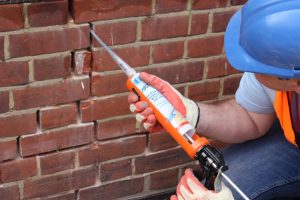Dampness in homes, a prevalent issue across the UK, not only compromises the comfort of living spaces but also poses a significant threat to property values.
Recognising the signs of dampness—be it from penetrating moisture, rising dampness, or condensation—is crucial for maintaining the structural integrity and aesthetic appeal of buildings.
This introduction serves as a gateway to understanding how professional damp proofing can act as a bulwark against these challenges, safeguarding both your investment and your living environment.
As we delve deeper, it becomes evident that the repercussions of unchecked dampness extend beyond mere physical damage.
The presence of dampness can deter potential buyers, significantly reducing a property’s market value. It’s not just about the unsightly marks on walls or the musty odours; dampness can cause serious structural damage over time.
Professional damp proofing, therefore, is not just a remedial measure but a preventive strategy that ensures the longevity and appeal of your property.
Understanding Damp
Damp in buildings manifests in various forms, each with its own set of causes and indicators. Rising dampness, which occurs when groundwater moves up through walls, is characteristically marked by tide marks and peeling wallpaper at the base of walls.
Penetrating dampness, resulting from water ingress through faults in the building envelope, often shows as damp patches on walls or ceilings that worsen with rain.
Condensation, the most common form, arises from excess moisture in the air, leading to water droplets on windows and walls, fostering mould growth.
The causes of dampness are multifaceted, ranging from structural issues, such as defective roofing or plumbing, to environmental conditions, like poor ventilation or heating.
Identifying the signs early—damp spots, musty smells, mould growth, or deterioration in building materials—is essential.
These indicators not only signal the presence of dampness but also highlight the need for a thorough assessment to prevent further damage and ensure the property remains a healthy, valuable asset.
The Impact of Damp on Property Value
The presence of dampness can significantly depreciate the value of a property by undermining its structural integrity and aesthetic appeal.
Prospective buyers are often deterred by signs of moisture issues, as they anticipate the need for costly repairs and the potential for ongoing problems.
This aversion can lead to prolonged selling periods or the necessity to reduce the property’s price significantly to secure a sale.
Moreover, dampness can lead to extensive damage to the fabric of a building if left untreated. This not only escalates the repair costs but also affects the property’s marketability.
From stained walls and damaged plaster to weakened timber and corroded metalwork, the effects of dampness can be far-reaching, impacting everything from the building’s appearance to its structural soundness.
Addressing damp issues promptly with professional solutions not only preserves the property’s condition but also its value in the competitive real estate market.
The Role of Professional Damp Proofing
Professional damp proofing services offer comprehensive solutions to moisture-related issues, utilising advanced techniques and materials to effectively shield properties from dampness.
Unlike DIY approaches, professional services come with expert diagnoses, customised treatment plans, and guarantees, ensuring that the damp proofing measures are effective and durable.
Professionals not only address the current symptoms but also investigate the root causes of dampness, providing a holistic approach to moisture control and prevention.
Engaging a professional damp proofing company means benefitting from their specialised knowledge, skills, and tools.
From chemical damp proof courses to physical barriers and innovative moisture management systems, these experts can deploy a range of strategies tailored to the specific needs of your property.
This level of expertise and precision in addressing dampness is paramount in protecting your home or commercial building from the detrimental effects of moisture, ensuring that your property retains its value and appeal over time.
Conclusion
The significance of professional damp proofing in maintaining and enhancing property value cannot be overstated.
Dampness is not merely an aesthetic concern but a serious issue that can compromise the structural integrity and marketability of a property.
Through early detection, professional assessment, and effective treatment, property owners can mitigate the risks associated with dampness, ensuring their buildings remain healthy, attractive, and valuable assets.
In a market where first impressions and structural soundness are crucial, investing in professional damp proofing services is a wise decision.
Such proactive measures not only preserve the condition and value of properties but also provide peace of mind to owners and occupants alike.
By prioritising the health of your building through professional damp proofing, you safeguard not just a physical structure but also the value and legacy of your property for future generations.


